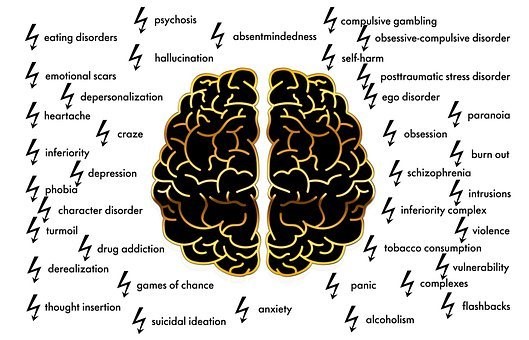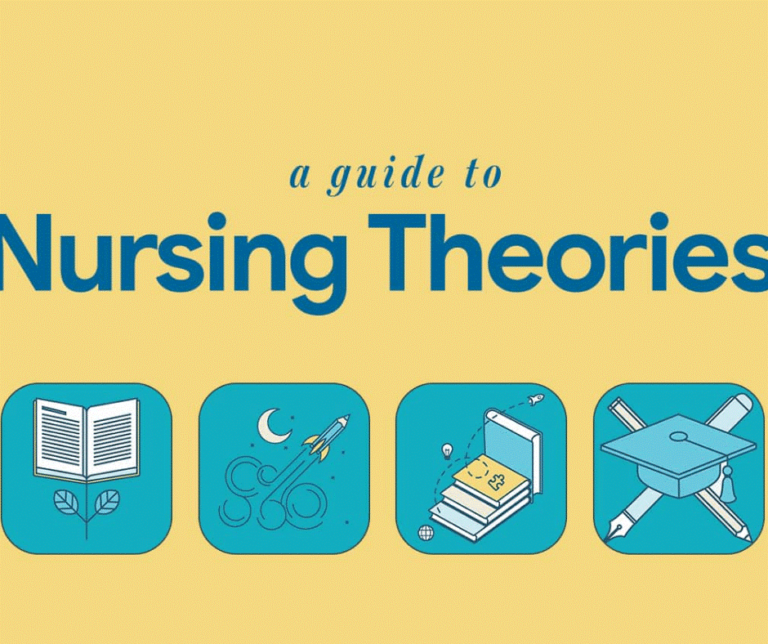Nursing Diagnosis and Interventions for Risk of Fall-A Student’s Guide
Introduction
The risk of falls is a significant issue in the elderly population. Falls are a significant cause of morbidity and mortality, as well as costly to healthcare systems in developed countries.
Despite this, there has been little research into effective interventions for reducing the risk of falls. The following nursing diagnosis and interventions will be discussed: Risk factors, Prevention, Assessment, and Diagnosis. These are meant to guide nursing students in their studies.
As you read, keep in mind that our top writers are ready to help in case you get stuck or cannot complete your nursing assignment due to other reasons such as a busy schedule. All you need to do is place an order with us!
Disclaimer: The information presented in this article is not medical advice; it is meant to act as a quick guide to nursing students, for learning purposes only, and should not be applied without an approved physician’s consent. Please consult a registered doctor in case you’re looking for medical advice.
Who is at a Higher Risk of Injury from Falling?
Falling occurs at all ages, and both genders are equally susceptible. However, the risk of injury from falling is most significant in the elderly population:
Older people are more likely to get injured from falling because of their decreased physical abilities.
Risk Factors for Falls
Falls are a common occurrence in babies, young children, and the elderly population, with an estimated 25% of individuals over 65 years falling at least once per year. As people age, their physiological and physical attributes decrease, making them more susceptible to falls.
The above attributes increase the risk of falls in three categories: Balance and postural instability, Gait and movement organization, and Vision.
Other risks for falls factors include vitamin D deficiency, bone health conditions, and lower body weakness.
Balance and Postural Instability
Decreased muscle strength can result in a reduced ability to support oneself and maintain balance. This results in an increased chance of tripping, stumbling, and falling.
Falls may occur when carrying out everyday activities such as crossing the street, climbing stairs, or reaching for items on a high shelf. Loss of bladder control can also cause falls by increasing one’s sense of dizziness.
Balance is the ability to maintain one’s position while standing or while moving. The three types of balance are: static, postural, and dynamic.
Static balance is a temporary state of equilibrium achieved through some means, such as holding on to something.
Postural balance is the maintenance of one’s body in a steady position, without support from anything else, e.g., standing upright.
Dynamic balance describes being able to move while maintaining balance, e.g., walking. A lack of muscle strength and increased muscle weakness can make it challenging to maintain a steady posture or position.
Gait and Movement Organization
Gait is the movement pattern produced by walking or running, consisting of two phases: The stance phase when moving forward on one’s feet and the swing phase when moving forward with a different foot.
Gait is described by three attributes: Gross motor skills (strength and coordination), Sensory-perceptual capabilities, and cognitive ability.
Vision
Vision is the ability to see an object in sufficient detail to recognize it and determine its size, shape, and distance. It can also be described as the complete process of bringing light into one’s visual system producing sight.
A common cause of falls in elderly individuals is impairment of vision. Older adults are more likely than younger adults to lose their sight due to age-related conditions such as glaucoma and cataracts.
Vitamin D deficiency
Vitamin D is essential for the absorption of calcium and phosphorus from the diet for use in bone formation. Vitamin D deficiency results in weakened bones, leading to a greater risk of fractures.
Fractures can cause mobility problems, leading to a greater chance of tripping and falling.
Bone health conditions such as osteoporosis
Osteoporosis is a condition where bones are so weak that they lose their density and become more prone to fracturing. Osteoporosis occurs when bone cells lose the ability to rebuild the bones.
Osteoporosis results from decreased bone mass from a lack of estrogen (seen in women after menopause and in older men).
Lower body weakness
As people age, their muscle mass decreases, making them more susceptible to falls. Strength and coordination in lower limb muscles are important factors in maintaining balance during daily activities such as standing up from a seated position and crossing the road.
Lower body weakness can cause an individual to fall during Walking, stair climbing (stairs are narrow steps), and rising from a seated position.
In addition to the above-mentioned risk factors for falls, there is another category which is the environmental factor.
Environmental risks include poor lighting in one’s home or office, slippery floors, or steps.
Poor lighting
Poor lighting in a home or office can make it difficult to navigate around the environment. It limits one’s vision making it hard to see obstacles and identify where things are. This can lead to a person accidentally hitting an object such as a wall or walking into furniture (i.e., a couch).
Slippery floors or steps
To prevent falls, it’s important that the environment has no slippery surfaces and there aren’t any objects in the way which could cause someone to trip over them.
Prevention of Falls
Individuals who are at a high risk of falls should avoid situations that have been identified as potential hazards. These may include:
- Always be careful while walking on slippery surfaces – e.g., wet floors, stairs with worn-out rugs on them, and outside roads when it is raining, or the ground is wet.
- Ensure that all walking areas are clear of objects such as toys, furniture, etc., which may cause tripping.
- Always use handrails when walking up or down the stairs to maintain a steady balance.
- Use substantial support stockings rather than loose ones when walking outside.
- Inspect all rugs before placing them on the floor, and avoid using those with loose or worn-out threads, as they may cause tripping. Avoid sitting in chairs that tend to rock backward or forwards while seated on them.
- Ensure there is proper lighting in areas where the individual spends most of their time.
- Wear supportive solid shoes and never go barefooted when walking outside or in an area that has been identified as a high-risk fall zone.
- Avoid travelling at night on roads where lighting is lacking, such as poorly lit footpaths and dimly lighted streets.
- Uneven surfaces, cracks, or holes on the streets pose a severe risk of taking a tumble while walking. Try to walk on level surfaces if possible.
- If individuals have just gotten up from their bed, ensure that they are steady on their feet before attempting any physical activity such as getting dressed.
- Keeping the body physically fit is an essential measure that one can take to reduce the risk of falling. It is recommended that individuals perform regular stretching exercises at least once a day to improve muscle mobility and strength.
Assessment of Fall Risk


The following tests or assessments help determine an individual’s fall risk levels:
Blood tests: It may be helpful to perform a complete blood count (CBC) or a blood test for hemoglobin levels, especially if the individual has any history of chronic bleeding.
Physical Examination: A physical examination can reveal many underlying medical conditions that make it difficult for an individual to maintain balance or have difficulty walking.
Posture and gait analysis are also recommended to evaluate the quality of an individual walking and determine if they are at risk of falling while walking.
Hydroxyephedrine test: A Hydroxyephedrine test can be performed on an individual’s urine sample after 48 hours of taking the medication to identify any possibility of overdosage that may prove to be dangerous in the long run.
A periodical and detailed assessment of an individual’s living environment can help identify any potential hazards that may pose a risk of falling.
Some individuals are born with certain medical conditions which, if left untreated, can cause them to lose balance quickly. Others develop these conditions due to age-related changes in their bodies.
If an individual’s special care needs are not met, this may prove to be dangerous and may lead to severe consequences such as falls or accidents in the long run.
When identifying a person’s medical history, it is important to consult all previous notes of the individual. The following information regarding the person’s medical history can help determine a suitable treatment plan for the individual.
Family History of Diabetes: If a person’s family history is full of diabetes patients, it may be prudent to get them tested regularly without any delay.
History of Chronic Bleeding or Blood Loss: Any history of chronic bleeding can be potentially dangerous. If left untreated, it will cause an individual to become frail in the long run and may lead to a fall.
History of Stroke: If a person’s family has a history of stroke, it is recommended for this individual to undergo regular checkups monthly. The physician will need to be notified of any symptoms such as dizziness, loss of balance, or headaches which may indicate the possibility of a stroke.
History of Falls: If an individual has already had a fall in the past, it is recommended that they should undergo a thorough examination to check for any underlying medical condition that could potentially increase the risk of them taking a tumble in the future.
History of Vision and Hearing Problems: It is recommended that individuals with poor vision or hearing problems take extra care while walking to prevent them from tripping over any obstacles on the floor or making contact with an object around them.
You may also be interested in Nursing Diagnosis for Cystic Fibrosis
Nursing Interventions to Reduce the Risks of Falling
The risk of falling can be significantly reduced by the use of proper bedding and mobility equipment.
- Older individuals need to have a good support system in place to ensure their safety. This includes family members or friends that are regularly in touch with them.
- These elderly should be given instructions on what they can do to reduce their risk of falling. These instructions should include avoiding activities that make them lose balance easily, such as carrying heavy groceries or lifting heavy objects, etc.
- They may also be advised to start a regular exercise regime, improving the quality of their muscle tone and helping them maintain an upright posture.
- Young children and babies should also be made aware of the dangers of falling. The parents/guardians should instruct them to avoid playing around with obstacles such as chairs or tables to prevent them from taking a tumble.
- Parents can also get their child tested for any medical condition such as vision or hearing problems that may lead them to lose balance easily if left untreated.
- The elderly can also be made aware of the location of the local hospital and the contact numbers in case any untoward incident occurs. Making use of emergency services on time can prove to be quite helpful for patients who have just had a fall and need immediate attention.
- Medical complications such as infections or illnesses may require an individual to stay in the hospital for a longer duration. The care providers must consider the patient’s ability to maintain their balance while lying down or sitting up.
- The nurses need to use good positioning techniques and have them undergo regular range of motion exercises if they cannot hold their head, arms, or limbs in an appropriate position, which may ultimately result in them falling.
- The nurses should also inform the patients about any precautions they need to take while walking and advise them not to walk on slippery surfaces such as marble floors or vinyl. The ground beneath their feet should be kept clean by regularly mopping during the cleaning sessions.
- Making use of a cane can help the patients maintain an upright posture while walking.
- They may also be provided with a seat that can help them stay in an upright position for long periods without bending their bodies or sitting on the ground.
- It is also important to have a good system in place to ensure that the patients are not left unattended. This will reduce their risk of falling since they will not be able to move around while being in an unconscious state.
- If the patients have to be left alone, it is recommended that they be kept in a well-lit area with sufficient lighting. The use of an alarm system can further help them stay safe from falling.









